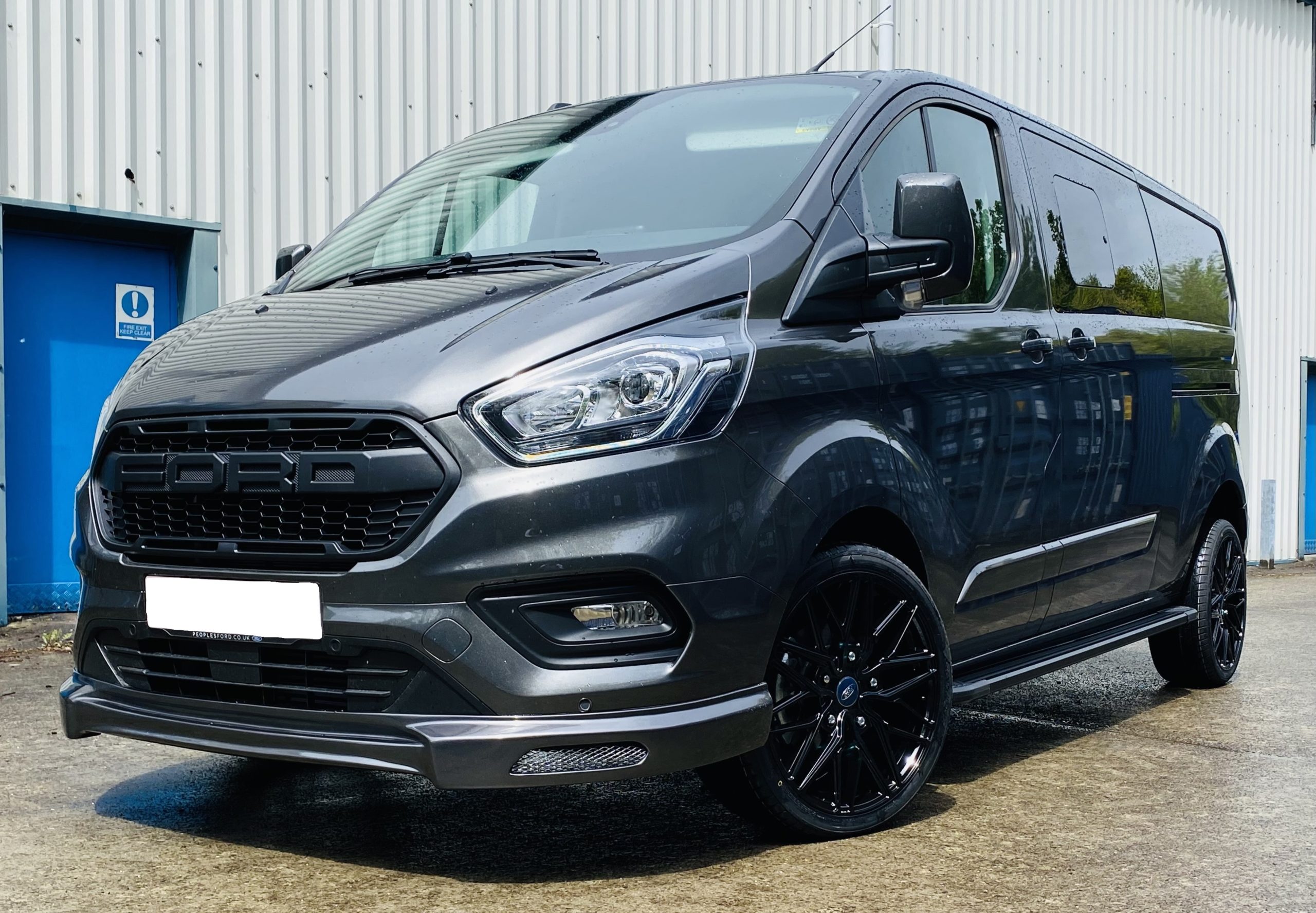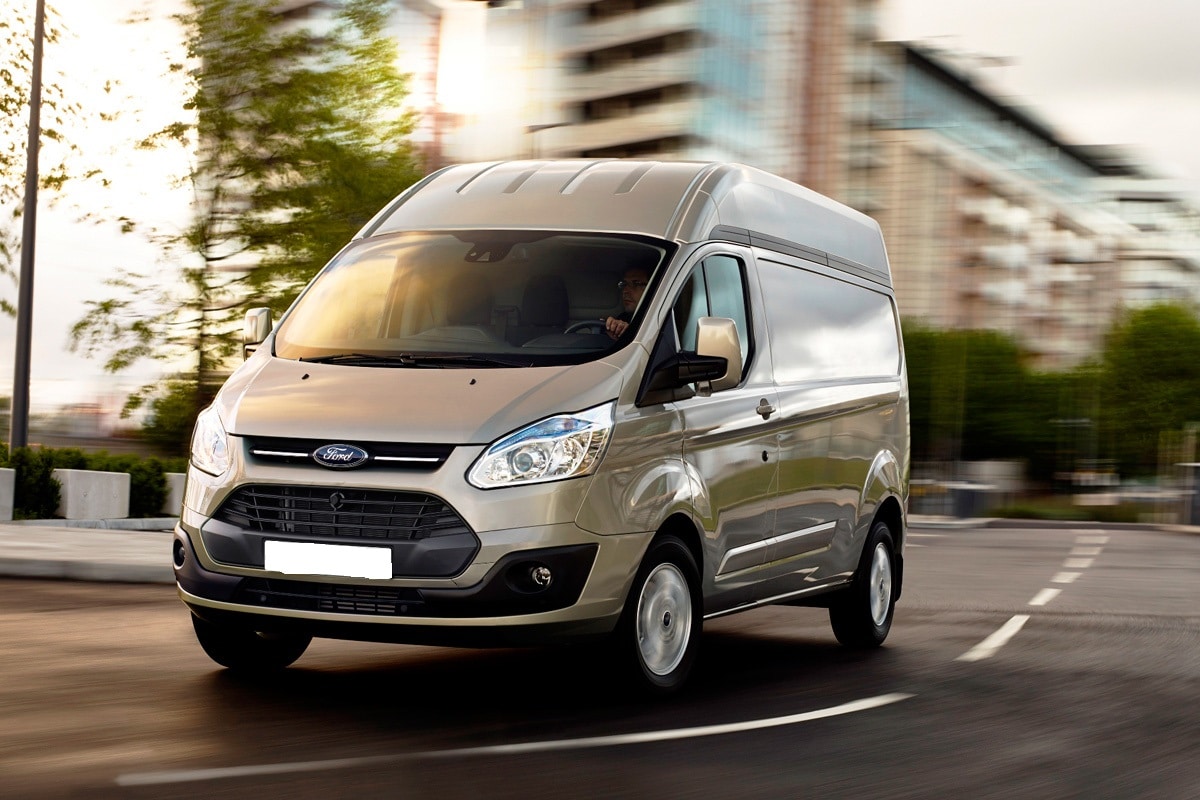A medium van is a reasonable compromise between greater load capacity and payload over a small van while still allowing relatively easy parking and a less daunting driving experience than large vans. It is also less expensive than a large van in most case. Their versatility as crew vans, also known as double-cab vans, combi vans or kombi vans is further enhanced by the fact that, even when equipped with the second row of seats, they still provide a spacious load area that is significantly larger than the boot of any standard car. It is for this reason that medium vans are particularly well suited to particular lifestyles as they have the capacity to transport a large number of people as well as a large amount of equipment.
As a result, the Volkswagen Transporter line of vans has long been a favorite of surfers; the Mercedes Vito and, in particular, the Ford Transit Custom has large enthusiast fanbases as well.
A high seating position and superb road holding are standard features in most modern mid-size vans, making them a good alternative to a large car or SUV when it comes to driving pleasure. It is true that they will lean a little more in corners and that the strong, load-carrying suspension will make them a little bumpier, but practically all of the newest high-tech equipment and options that are available for cars are now available for vans as well.
On the negative side, medium van operating expenses will be higher than those of a small van, while large vans can transport a significantly greater volume of cargo.
Which medium van is the most suitable for me?
Medium vans are available in a broad range of styles and sizes, ranging from basic working vans with unpainted bumpers and minimal standard equipment to high-speced near-luxury vehicles with extensive standard equipment. Ford and Volkswagen, in particular, can produce sport vans with body kits, huge alloy wheels, and lowered suspension. However, while these are visually appealing, they will be more subject to damage on construction sites, diminishing their usefulness when compared to more practical ones.
Lower-spec vans, on the other hand, will not be as well finished in the back – which is important if you need to protect your investment from damage when loading – and may be missing curious items such as engine undertrays and wheel arch liners that you would accept as normal on a car, let alone creature comforts such as air conditioning, as a result.
Cheaper vans are not usually well-appointed on the inside, particularly if they have a second row of seating installed. Because of the extremely upright seat backs and door trim that does not even have armrests, it may feel as if you are putting your passengers in a holding cell.
Another factor to consider is safety. For example, look at how many airbags are included as standard equipment. Euro NCAP has also begun grading vans based on advanced driver assistance systems (ADAS), which has resulted in the company singling out a few medium vans as being recommendable.
How long will you keep your medium van?
Approximately how long do you intend to keep your new van? Most medium vans come with a three-year guarantee, but there are some that are now available with five-year warranties — and you may be eligible for additional coverage if you choose to finance your vehicle through a manufacturer’s financing program. When making a purchase, it is a good idea to inquire about servicing plans as well. These can be quite cost-effective and can assist you in better budgeting your monthly expenditures.
What size medium van do you recommend?
Consider the size of the vehicle in addition to the trim level and specifications. Some medium vans are available in three different body lengths; however, the most frequent option is to choose between short-wheelbase and long-wheelbase models (commonly referred to as L1 and L2). Longer variants provide the capacity to carry more in the back. However, they will be more difficult to park as a result. Most medium vans are available in low-roof (H1) configurations, however, some manufacturers also offer high-roof (H2) configurations; if you need to fit into multi-story parking garages, a low-roof H1 van is the best option. If you do not require access to a carpark but will be rummaging around in the back on a regular basis, a high-roof van may allow you to stand fully upright rather than bent over while doing so. There is a wide range of payload ratings available in the medium panel van sector, so make sure that whatever vehicle you purchase has enough payload capacity for the items you intend to transport., Weight plates for certain vans, which are normally placed under the bonnet) can be checked, but remember to take any installed equipment into consideration. The towing capacity varies as well, and it can be determined in the same method.
Which is better when it comes to a mid-size van: diesel, electric, or hybrid?
Despite the fact that Volkswagen has experimented with petrol engines in the past, diesel continues to be the most popular and typical fuel for a midsize van. The number of 100 percent electric vehicles on the market is growing, and there are several petrol-electric hybrids to pick from as well.
Diesel engines are excellent for long-distance fuel economy and torque. You can buy it almost anywhere, and refueling takes only a few minutes.
Modern diesel engines, on the other hand, are not fond of making short travels. In other words, if you are a multidrop driver, such as a parcel courier, you may begin to experience problems with your diesel particulate filter (DPF) if you do not give your van the opportunity to clear it out on a long run every now and again.
Poor quality diesel fuel can cause to high-pressure injection systems, so it is better not to rely on the cheapest supermarket diesel fuel every time you fill up your tank.
Electric mid-size vans are not affected by this issue, and they can also be extremely cost-effective to operate in terms of both electricity bills and maintenance. However, they do cause people to experience uncertainty because recharging one takes a long time.


 High Top Vans
High Top Vans